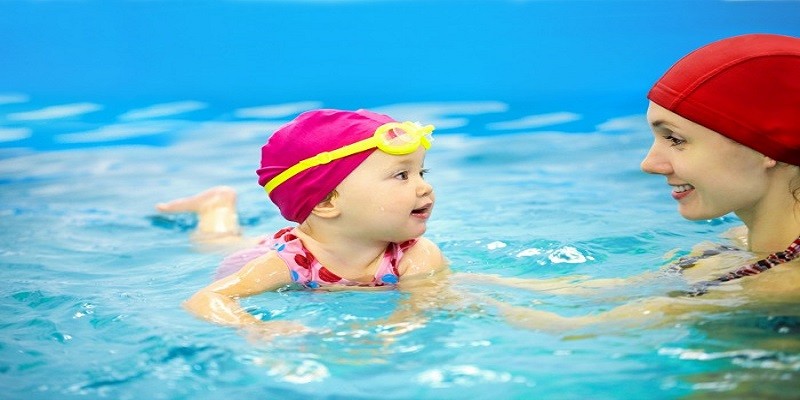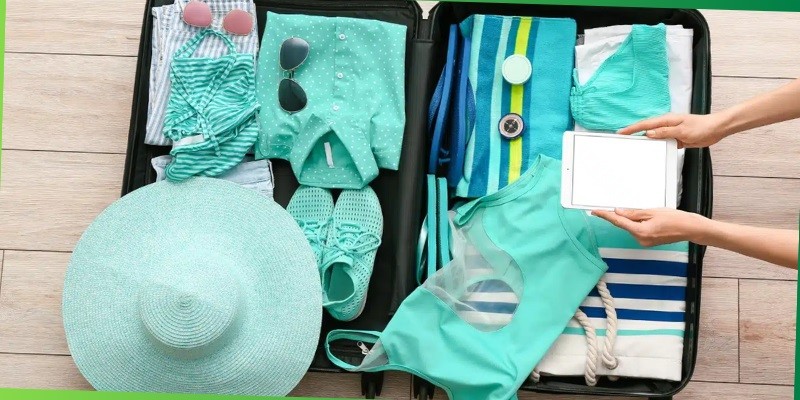Last Updated on January 15, 2025
Teaching a toddler to swim involves ensuring their safety and gradual introduction to water. In this process, it is essential to build their comfort and confidence through playful, supervised activities in shallow water.

Credit: m.youtube.com
Importance Of Teaching Toddlers To Swim
Teaching toddlers to swim is a vital skill that parents should prioritize. Not only does swimming boost their physical strength and coordination, but it also enhances their cognitive and social development. Early swimming instruction not only ensures a safe and enjoyable experience for children around water, but it also equips them with valuable skills for a lifetime. In this article, we will explore the various benefits of teaching toddlers to swim, the water safety skills they can learn, and how to make the learning process both fun and effective.
The Benefits Of Early Swimming Instruction
Early swimming instruction offers numerous benefits that can positively impact a toddler’s overall development. Let’s take a look at some of the key advantages:
- Physical Development: Swimming engages the entire body, promoting muscular strength, flexibility, and coordination. Toddlers who swim regularly tend to have stronger muscles and improved balance compared to their non-swimming peers.
- Cognitive Development: Learning to swim involves following instructions, spatial awareness, and problem-solving skills. These cognitive abilities developed during swimming lessons can improve a toddler’s overall cognitive development.
- Water Confidence: Early swimming instruction helps toddlers gain confidence in the water and overcome any fear or anxiety they might have. This confidence can significantly contribute to their emotional well-being and boost their self-esteem.
- Social Skills: Swimming lessons often involve group activities and interaction with other toddlers. This social setting encourages toddlers to develop their communication and cooperation skills while having fun with their peers.
Water Safety Skills For Toddlers
Teaching toddlers water safety skills is crucial to ensure their well-being around water. By introducing them to essential water safety techniques early on, you can empower your child and mitigate potential risks. Here are some vital water safety skills you can teach your toddler:
- Entering and Exiting the Water Safely: Teach your toddler how to enter and exit the water using appropriate techniques, such as sitting or sliding in and climbing out using the poolside or ladder.
- Basic Floating and Buoyancy: Help your toddler learn how to float on their back and maintain a relaxed posture to keep their head above water. This skill can provide a valuable safety measure in case they accidentally fall into a pool or body of water.
- Safe Submersion: Teach your toddler how to hold their breath and keep their mouth closed while submerging underwater momentarily. This skill can prevent panic and ensure their safety in situations where submersion is necessary.
- Understanding Water Depth: Develop your toddler’s understanding of water depth by introducing the concept of shallow and deep areas. This knowledge will enable them to make informed decisions and avoid venturing into unsafe depths.
- Recognizing Water Hazards: Teach your toddler about potential water hazards, such as strong currents, deep sections, and dangerous objects in the water. Instilling awareness will help them identify risks and take appropriate precautions when swimming in unfamiliar environments.
By imparting these water safety skills, you can significantly reduce the risks associated with water-related activities and foster a safe and enjoyable experience for your toddler.
Preparing For Swimming Lessons
Teaching a toddler to swim can be a fun and rewarding experience for both the child and the parent. However, it’s important to ensure that you have everything in place before you dive into the water. This section will guide you through the important steps involved in preparing for your toddler’s swimming lessons.
Choosing The Right Time And Age To Start
When it comes to introducing your toddler to swimming, timing is crucial. It’s recommended to start swimming lessons when they are between 1.5 and 3 years old, as this is the ideal age range when children are usually ready to learn basic water skills. At this stage, toddlers have developed better head and neck control, are more comfortable in the water, and are able to follow simple instructions.
Essential Swimming Equipment For Toddlers
Before the swimming lessons begin, make sure you have the necessary swimming equipment for your toddler. Here’s a list of essential items to ensure a safe and enjoyable swimming experience for your little one:
| Swim Diapers: | Invest in swim diapers that are specifically designed for swimming activities. These diapers don’t swell up in the water and provide a snug fit, keeping accidents at bay. |
| Swimsuit: | Choose a swimsuit that is comfortable and allows for easy movement. Opt for a one-piece suit or a two-piece with secure straps to prevent any wardrobe malfunctions. |
| Swim Cap: | A swim cap helps to keep your toddler’s hair out of their face and protects their scalp from the chlorine in the pool. |
| Goggles: | Invest in a pair of toddler-sized goggles to protect their eyes from the water and help them feel more comfortable under the surface. |
| Swim Floatation Devices: | Consider using swim floatation devices such as swim vests or arm floaties to provide additional support and build confidence in the water. However, always keep a close eye on your child, as these devices are not a substitute for supervision. |
Creating A Safe And Comfortable Environment
Creating a safe and comfortable environment is essential for your toddler’s swimming lessons. Here are some tips to ensure a conducive atmosphere:
- Choose a swimming pool or a suitable water body with shallow and warm water to start.
- Make sure the pool area is clean and free from any hazards.
- Prepare for the lessons with a pre-swim routine, such as changing into the swimwear and applying sunscreen.
- Ensure that you or a certified swim instructor are present at all times to supervise your toddler during the lessons.
- Maintain an encouraging and positive attitude to help your toddler feel comfortable and excited about swimming.
- Give your little one plenty of praise and rewards for their efforts and achievements.
By following these steps and preparing your toddler for swimming lessons, you’re setting the stage for a successful and enjoyable swimming journey!
Building Confidence In The Water
Learn effective techniques for teaching toddlers to swim and building their confidence in the water with these expert tips. Develop their skills and ensure their safety while enjoying the swimming experience.
Introduction To Water Play And Familiarization Techniques
Introducing toddlers to swimming at an early age is a great way to ensure their safety around water and build their confidence. By familiarizing them with the water through fun and engaging activities, you can help them develop a positive association with swimming. In this section, we will explore some effective techniques that can be used to introduce toddlers to water play and familiarize them with the swimming environment.
Encouraging Positive Associations With Water
To build your toddler’s confidence in the water, it’s essential to create positive associations with swimming. Make the experience enjoyable by using playful techniques that capture their attention and make them excited to enter the water. Here are some strategies you can implement:
- Start by allowing your toddler to dip their toes in the water and let them experience the sensation. Encourage them to splash and play with toys in a shallow area.
- Use colorful and floatable toys to attract their attention. Toys that squirt water or make sounds can add an element of fun to their swimming experience.
- Sing songs or recite nursery rhymes that involve water to create a joyful atmosphere. Incorporate water-related themes like ducks, boats, or fish to make it more engaging.
- Offer words of encouragement and praise during their water play sessions. Celebrate their achievements, no matter how small, to boost their confidence and motivate them to explore further.
Overcoming Fear And Anxiety
It’s common for toddlers to experience fear or anxiety when first introduced to swimming. By addressing their concerns and providing a supportive environment, you can gradually help them overcome their worries. Here are some strategies to consider:
- Start with baby steps and expose your toddler to the water in a controlled manner. Begin with shallow pools or calm bodies of water where they can feel secure.
- Hold your toddler close and provide reassurance by staying calm and confident yourself. Your behavior and demeanor can have a significant impact on their perception of swimming.
- Gradually introduce new swimming skills and techniques at a pace that matches your toddler’s comfort level. Progress slowly, allowing them to build confidence at their own pace.
- Consider enrolling your toddler in swimming lessons with experienced instructors who specialize in teaching young children. These professionals can provide age-appropriate guidance and support.
- Never force your toddler into the water or push them beyond their limits. It’s important to respect their feelings and allow them to progress at a pace that feels comfortable for them.
By implementing these techniques and maintaining a patient and supportive approach, you can build your toddler’s confidence in the water. Remember, the key is to make swimming enjoyable, create positive associations, and take it one step at a time. With the right guidance and consistency, your little one will soon be swimming with confidence!
Teaching Basic Water Skills
Teaching toddlers to swim is an important skill that not only develops their water confidence but also ensures their safety in and around water. While it may seem daunting at first, breaking down the process into smaller, achievable steps can make it easier for both you and your little one. In this section, we will focus on teaching some fundamental water skills that are essential for a toddler’s swimming journey.
Floating Techniques For Toddlers
One of the primary skills to teach toddlers in the water is floating. Floating not only helps them feel comfortable and relaxed in the water but also lays the foundation for future swimming techniques. Here are some techniques to introduce floating to your toddler:
- Back floating: Gently support your toddler’s back and head while encouraging them to let their body float on their back. Gradually reduce the support as they gain confidence and balance.
- Front floating: With your hands under their belly and chin resting on the water, encourage your toddler to float on their front. This helps them become aware of their body position in the water.
Submersion And Breath Control Exercises
Submersion and breath control exercises are vital for p
Introducing Propulsion Techniques
Teaching a toddler to swim is an essential life skill that not only promotes their safety but also instills confidence and a love for the water. One key aspect of teaching toddlers to swim is introducing them to propulsion techniques, which involve teaching them how to kick properly and use their arms to move through the water. These techniques not only help toddlers propel themselves forward but also serve as the foundation for more advanced swimming strokes later on.
Kicking is the basic building block of swimming propulsion for toddlers. To teach your little one to kick properly, you can follow these steps:
- Start by holding your toddler securely under their arms while they are in the water. This will help them feel safe and supported.
- Gently encourage your toddler to kick their legs by moving their feet up and down in the water. You can use phrases like “kick, kick, kick” to reinforce the action.
- Gradually let go of your toddler’s body, allowing them to practice kicking independently. Be sure to support them if needed and offer plenty of praise and encouragement.
- As your toddler gains confidence, you can introduce games and toys that require them to kick their legs to reach or catch them. This will make the learning process more fun and engaging.
In addition to kicking, teaching toddlers the basic arm movements is crucial for propulsion. Here’s how you can introduce your toddler to basic arm movements:
- Standing in the water, show your toddler how to move their arms forward and backward in a scooping motion.
- Encourage your toddler to mimic your movements while emphasizing that their arms should stay in the water throughout the exercise.
- Practice these arm movements together, gradually increasing the speed and intensity. Make it a fun game by pretending to scoop up imaginary treasures or animals from the water.
- As your toddler becomes more comfortable with the arm movements, incorporate them into the kicking exercises. Encourage them to coordinate their kicks with the arm scoops for more efficient forward motion.
Combining Kicking and Arm Movements for Forward Motion
Once your toddler has mastered kicking and basic arm movements, it’s time to combine them for forward motion in the water. Follow these steps to help your toddler swim forward:
- Begin by holding your toddler under their arms and encouraging them to kick and perform the arm scoops simultaneously.
- Gradually release your hold, allowing your toddler to experience the feeling of propelling themselves forward.
- Continue providing support and guidance as needed, allowing your toddler to gain confidence and become more independent in their forward swimming.
- Remember to celebrate your toddler’s progress and offer positive reinforcement to keep them motivated and excited about learning to swim.
Introducing these propulsion techniques to your toddler will lay the foundation for developing their swimming abilities. Remember to be patient, supportive, and make the learning process enjoyable for your little one. Soon enough, you’ll witness them confidently swimming on their own, making you proud as a parent.
Water Safety And Emergency Skills
Teaching your toddler to swim is not just about having fun in the water. It’s also important to focus on water safety and emergency skills. These skills can prevent accidents and ensure that your little one is prepared for any unforeseen circumstances. In this section, we will explore three essential water safety and emergency skills that every toddler should learn: teaching them to hold on to the pool edge, practicing safe entries and exits from the water, and introducing toddler water rescue techniques.
Teaching Toddlers To Hold On To The Pool Edge
Teaching toddlers to hold on to the pool edge is a crucial skill that can save their lives in an emergency. By learning how to hold on, they will be able to support themselves in the water and wait for help. Here’s how you can teach your toddler to hold on to the pool edge:
- Start by standing near the pool’s edge with your toddler.
- Encourage them to reach out and hold on to the edge with their hands.
- Support them and show them how to grip the edge securely.
- Repeat this exercise regularly, gradually increasing the distance between you and your toddler.
Remember to praise your toddler for their efforts and progress. With consistent practice, they will develop the muscle strength and confidence needed to hold on to the pool edge effectively.
Practicing Safe Entries And Exits From The Water
Safe entries and exits from the water are essential for preventing accidents and ensuring that your toddler feels comfortable in the water. Here are some guidelines to follow when teaching your toddler how to enter and exit the water safely:
- Teach your toddler to walk slowly and cautiously when entering the water.
- Show them how to enter the water feet-first, ensuring that they do not dive headfirst into unknown depths.
- Encourage your toddler to always have an adult present when entering or exiting the water.
- Remind them to use the pool stairs or ladder when getting in or out of the pool.
- Practice these safe entry and exit techniques regularly, both at home and in swimming lessons.
By instilling these habits early on, you are teaching your toddler to prioritize their safety whenever they are in or around water.
Introducing Toddler Water Rescue Techniques
While it’s always important to supervise toddlers closely when in or near water, accidents can still happen. Introducing your toddler to basic water rescue techniques can give them the skills they need to help themselves or others in an emergency. Here’s how you can do it:
| Basic Water Rescue Techniques for Toddlers |
|---|
| Teach them to shout for help if they see someone in trouble. |
| Show them how to safely extend a pool noodle or flotation device to someone in need. |
| Encourage them to throw a lifebuoy or rope to someone who cannot reach the edge of the pool. |
Practicing these rescue techniques in a controlled and supervised environment will help your toddler become more confident in their ability to assist in an emergency situation.
Water safety and emergency skills are fundamental for any toddler learning to swim. By teaching them to hold on to the pool edge, practicing safe entries and exits, and introducing basic water rescue techniques, you are equipping your child with essential life-saving skills. Remember, consistency and supervision are key when teaching these skills, so make sure to incorporate them into your toddler’s swimming routine.
Fun And Effective Swim Games
Teaching a toddler to swim can be a daunting task, but it doesn’t have to be a chore. By incorporating play and games into swimming lessons, you can make the experience both fun and effective. Toddlers learn best when they are engaged and having a good time, so why not turn swim lessons into a playtime adventure? In this section, we’ll explore different ways you can make swim lessons enjoyable for your little one while still teaching them important water skills.
Incorporating Play And Games In Swimming Lessons
When it comes to teaching toddlers how to swim, play is key. By incorporating games into your swimming lessons, you can capture your child’s attention and make the learning process enjoyable. Instead of simply instructing your child on proper swimming techniques, try turning it into a fun game. For example, you can play “Simon Says” in the water, where you give your child instructions such as “Simon says kick your legs” or “Simon says blow bubbles.” This not only teaches them the necessary swimming skills but also helps them develop listening and following directions.
Using Toys And Floating Devices To Teach Skills
Toys and floating devices can be excellent tools for teaching your toddler how to swim. By introducing toys such as floating rings, water balls, or diving sticks, you can make swim lessons more engaging and interactive. For instance, you can encourage your child to reach for a toy floating in the water, helping them practice their reaching and grabbing skills. Similarly, using a floating device like a kickboard or arm floats can help your little one build confidence and learn essential swimming movements, such as kicking or paddling.
Engaging Toddler With Interactive Swimming Activities
Another effective way to teach a toddler to swim is by incorporating interactive swimming activities. These activities not only keep your child entertained but also help them develop essential swimming skills. One popular activity is “Red Light, Green Light” in the water. In this game, you play the role of the traffic controller and instruct your child to swim when you say “green light” and stop when you say “red light.” This activity not only teaches them how to control their movements in the water but also helps them enhance their listening skills and reaction time.
Progression And Advancement In Swimming Skills
Teaching a toddler to swim is a significant milestone in their development. As you introduce your little one to the water, it’s crucial to understand the progression and advancement in swimming skills. By tracking their swimming progress, gradually increasing the difficulty of skills, and preparing them for advanced swim lessons, you can help your toddler become a confident and capable swimmer. Let’s dive in and explore each of these steps in detail.
Tracking Toddler’s Swimming Progress
Tracking your toddler’s swimming progress is essential to ensure their growth and improvement in the water. By keeping a record of their achievements, you can celebrate their milestones and identify areas where they may require additional attention. Here are a few ways to track your toddler’s swimming progress:
- Create a simple chart or spreadsheet to note down the skills they have mastered.
- Videotape or take photos of their swimming sessions to visually document their progress.
- Keep a journal to jot down any observations or milestones during their swimming lessons.
- Discuss their progress with their swim instructor to gain insights and suggestions for improvement.
By regularly tracking your toddler’s swimming progress, you can motivate them, recognize their efforts, and adjust their lesson plans accordingly to help them reach their full potential.
Gradually Increasing Difficulty Of Skills
As your toddler becomes more comfortable and confident in the water, it’s important to gradually increase the difficulty of their swimming skills. This progression will challenge and encourage their development while maintaining a safe and enjoyable swimming experience. Here are a few ways to gradually increase the difficulty of skills:
- Introduce new strokes and techniques once they have mastered the basics like floating and kicking.
- Encourage them to swim longer distances or deeper water slowly.
- Add pool toys or flotation devices to improve their coordination and water confidence.
- Practice various breathing techniques to prepare them for underwater swimming.
Remember, while pushing your toddler to advance their skills, always prioritize their safety and well-being. Tailor the difficulty level to their abilities and gradually increase the challenges as they progress.
Preparing Toddlers For Advanced Swim Lessons
As your toddler continues to grow and develop their swimming skills, it’s crucial to prepare them for more advanced swim lessons. These lessons will focus on refining their technique, building endurance, and introducing more complex swimming drills. Here are a few steps to prepare your toddler for advanced swim lessons:
- Ensure they have a strong foundation in basic swimming skills such as floating, kicking, and gliding.
- Introduce them to proper breathing techniques, including rhythmic breathing and breath control.
- Gradually increase the duration and intensity of their swimming sessions to build endurance.
- Expose them to various water environments such as pools, lakes, and ocean to broaden their swimming experiences.
By following these steps, you can set your toddler up for success in advanced swim lessons. Remember, every child progresses at their own pace, so be patient, encouraging, and supportive throughout their swimming journey.
Supporting Your Toddler’s Swim Journey
Discover helpful strategies and techniques for teaching your toddler to swim with our comprehensive guide. From gentle water introduction to building confidence and safety skills, we provide expert advice to support your toddler’s swim journey.
Communicating With Swim Instructors
When it comes to teaching your toddler to swim, effective communication with their swim instructors is crucial for their progress and safety. Establishing a strong relationship and open lines of communication will allow you to stay informed about your child’s progress and address any concerns you may have.
Here are a few key tips for communicating with swim instructors:
- Introduce yourself and express your goals for your toddler’s swim journey.
- Regularly check in with the instructor to discuss your child’s progress and areas for improvement.
- Ask for feedback on how you can support your child’s learning outside of lessons.
- Discuss any concerns or challenges your child may be facing in the water.
- Be open to suggestions and guidance from the instructor, as they are the experts in teaching swimming.
Encouraging Practice Outside Of Lessons
While swim lessons provide valuable structured learning, encouraging practice outside of lessons is essential for your toddler to build confidence and reinforce their skills. Here are some effective ways to support your toddler’s swimming practice at home or in other water environments:
- Provide opportunities for your toddler to swim in different settings, such as a local pool, a lake, or the beach, to expose them to various water conditions.
- Supervise your toddler closely during their practice sessions to ensure their safety while allowing them to explore and practice their swimming skills.
- Engage in interactive water play activities that incorporate basic swimming movements, such as kicking, arm strokes, and breath control.
- Use flotation devices or pool toys to help your toddler practice floating, gliding, and kicking independently.
- Reinforce water safety rules and encourage your toddler to develop good habits, such as never swimming alone and always listening to their instructor’s instructions.
Providing Positive Reinforcement And Support
Positive reinforcement and support play a critical role in motivating your toddler during their swim journey. By creating a positive and encouraging environment, you can help build their confidence and make learning to swim an enjoyable experience. Here are some strategies to provide positive reinforcement:
- Praise your toddler’s effort and progress, highlighting specific achievements or improvements they have made.
- Use positive language and avoid criticizing or comparing your child to others.
- Celebrate small milestones and set achievable goals that your toddler can work towards.
- Offer rewards, such as stickers or small treats, to acknowledge their hard work and dedication.
- Be patient and understanding, allowing your toddler to learn at their own pace and providing support when they encounter challenges.
By implementing these strategies, you can create a supportive environment that fosters your toddler’s love for swimming and nurtures their swimming skills. Remember to communicate closely with their instructors, encourage practice outside of lessons, and provide positive reinforcement every step of the way to help your toddler thrive in their swim journey.
Frequently Asked Questions Of How To Teach A Toddler To Swim?
How Can I Introduce My Toddler To Swimming?
You can start by creating a positive association with water, using toys and games to make it fun.
At What Age Should I Enroll My Toddler In Swimming Lessons?
Generally, it’s best to wait until your child is at least 1 year old before starting formal swimming lessons.
What Safety Precautions Should I Take While Teaching My Toddler To Swim?
Always supervise closely, use proper flotation devices, teach water safety rules, and ensure a safe swimming environment.
How Do I Help My Toddler Overcome Fear Of Water?
Gradually introduce them to water, provide support, use gentle encouragement and positive reinforcement to help them build confidence.
What Skills Should My Toddler Learn In Swimming Lessons?
Basic water safety, floating, kicking, reaching for the side of the pool, and blowing bubbles are important skills to focus on.
Can I Teach My Toddler To Swim Without A Pool?
Yes, you can start with bathtub activities, water play in a basin, or even visit a splash pad or kiddie pool.
Conclusion
Teaching a toddler to swim can be a rewarding experience for both parent and child. By following these simple steps, such as building trust, introducing water gradually, and using fun games and activities, you can help your toddler feel confident and safe in the water.
Remember to always prioritize safety and seek professional guidance when necessary. Enjoy this special bonding time with your little one and watch them thrive in the world of swimming.







